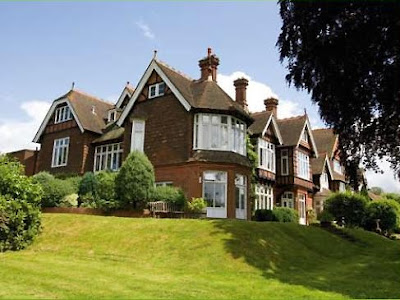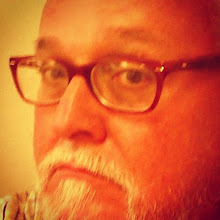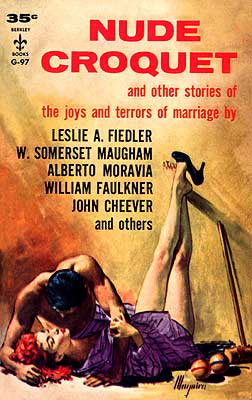
Lately, I've been catching up on many things that I've been working on. Today I'd like to share some information someone else has been working on—and I really appreciate it!
The following is an exchange of information from friend of the website Barry McAleenan and Liz Graydon, the webmaster of the interesting site Cuckfield Compendium. It was Barry who determined that, although George Mills wrote in the dedication to his 1939 book Minor and Major that he had attended a school called Parkfield in Haywards Heath, the school was likely in nearby Cuckfield. You can read the dedication above, left.
Here's the exchange that Barry began back in May…
On 27/05/2010 11:04, Barry McAleenan wrote:
Dear Liz
I'm trying to find out about the above school in the years 1900 to 1914. All I have established is that its address was: Cuckfield Road, Haywards Heath.
It could have been anywhere between Hurstpierpoint and Cuckfield proper. One of the masters retired to Purcells. I hope he was musical! Can you help?
Kind regards
Barry Mc
Liz Graydon wrote:
There was this mention on Friends Reunited:
Wick and Parkfield Preparatory School
Cuckfield Rd, Haywards Heath, Sussex
The school closed in the Summer of 1974. Created from the merger of two preparatory schools, hence the unusual name, it had existed for around 70 years.
Try googling Parkfield Prep School, there are a few mentions. Cuckfield Road is really bewteen Cuckfield and Staplefield, or so Google maps tells me.
Liz
On 03/07/2010 00:30, Barry McAleenan wrote:
Dear Liz
Many thanks for your industry. I only wish that there were more webmasters of your calibre.
For your shoebox: I have since accessed the Historical Directories website and found this entry:
Kelly's 1915 for Haywards Heath, page 444: Commercial section [Private, similar] Bent, Ernest Lionel, boys' preparatory school, Parkfield, Brighton Road.
I suppose it's possible that the name of the original house may have moved with the school.
With kind regards
Barry Mc
Date: Sat, 03 Jul 2010 09:59:38 +0100
From: Liz
That's interesting, thanks.
When I was googling I kept getting references to George Mills who was both a teacher and a writer. He was at Parkfield http://en.wikipedia.org/wiki/George_Mills_%28writer%29 http://www.whoisgeorgemills.com/2010/05/haywards-heath-brighton-line-teddy-boys.html
Friends Reunited also show there being a Wick and Parkfield school in Isaacs Lane, Haywards Heath, but does not indicate whether it is a prep school or not.I expect the West Sussex County Records Office (Chichester) will have records of schools in the area too.
 I may be repeating what you have already been able to do. The attached is the 1901 census [right] for Earnest [Ernest] Lionel Bent, schoolmaster at Butlers Green, [:] Parkfield. Butlers Green is on the outskirts of Haywards Heath in the Isaacs Lane area. He was born in Essex.
I may be repeating what you have already been able to do. The attached is the 1901 census [right] for Earnest [Ernest] Lionel Bent, schoolmaster at Butlers Green, [:] Parkfield. Butlers Green is on the outskirts of Haywards Heath in the Isaacs Lane area. He was born in Essex.
Attached is the 1891 Census for the likely the same person. (aged 10 years younger and born Essex, same occupation - mathematics) The attached 1881 shows him with his parents as does the 1871.
Wishing you well with your searching
Liz
[NOTE: Liz had attached copies of the 1871, 1881, 1891, and 1901 census forms for Ernest L. Bent. The 1901 U. K. Census form is the one that would be closest in proximity to the time George Mills would have attended the school, which he would have sometime between approximately 1903 and 1909. This 1901 form shows the school being at Parkfield and names several schollmasters, some of whom probably taught young George Mills. Click to enlarge and read it.]
Date: Saturday, July 03, 2010 6:40 AM
From: Barry McAleenan [barrymc@dittonsroad.orangehome.co.uk]
Dear Sam
This is what Liz Graydon has just sent me. Butlers Green is now part of Haywards Heath - pretty much to the right of the T into the 2028 on the old map (which I now date to circa 1925 - since reference was found to the partitioning of Ireland). The 2028 is also known as Isaacs Lane, but the actual junction has been moved. I read the census as Ernest Bent. Parkfield would have been in Butlers Green, which included the top end of Isaacs Lane. [This may have been known as 'the Brighton Road' since it would have been a 'route', if nothing else - but that's only a guess.]
Kind regards
Barry As always, thank you very much, Barry!
As always, thank you very much, Barry!
Taking a quick "virtual drive" down Isaac's Lane, I didn't find much: Mostly trees. One thing I did know was that, in looking for the addresses of my own relatives near Manchester, the homes have either been there, or they've been paved over in favor of apartments, subdivisions, or office parks. The fact that I didn't see any of those along Isaac's Lane led me to believe that the school hadn't been "developed" [read: demolished] into another structure or structures. At one point, I stopped, spun around, and peered up a drive into a place called "Downlands Park [pictured, right]," which was marked with a medical red cross on Google Maps. It certainly evidenced the characteristic size, shape, and multiple chimneys that we've seen on Victorian school buildings like Warren Hill School in Meads and The Craig in Winderere.
At one point, I stopped, spun around, and peered up a drive into a place called "Downlands Park [pictured, right]," which was marked with a medical red cross on Google Maps. It certainly evidenced the characteristic size, shape, and multiple chimneys that we've seen on Victorian school buildings like Warren Hill School in Meads and The Craig in Winderere.
Some quick research came up with the fact that the building was Downlands Park Nursing Home, run by an international organizaton called Bupa. I flipped through their on-line PDF brochure for the place and it looks beautiful, missing only Tom, Diane, Jane, and Harvey from Waiting for God—in fact, I think I did see Jane! [For a look around the home and its grounds, click HERE.]
Anyway, I contacted Bupa, who put me intouch with Lorraine Lane, the administrator at Downlands Park, who wrote: Dear Mr Williams,
Dear Mr Williams,
Thank you for your enquiry into the history of Downlands Park and yes it was indeed a preparatory school in the early 20th century. I will try to find out some more details for you and contact you as soon as I find out.
Kind regards
Lorraine Lane
Administrator Bupa Care Homes
Downlands Park Nursing Home, Isaacs Lane, Haywards Heath, West Sussex, RH16 4BQ
It's anyone's guess how long that might take, even if she remembers to do it. Still, it was awfully nice of her to reply so quickly. Thanks, Lorraine!
After letting him know of Ms. Lane's reply above, I received the following message from Barry:
Dear Sam
I've finally found Parkfield for you. You will find it just south of the crease [on the attached scan (map, shown)] where the west-going A272 from Haywards Heath junctions with the south-going A273 (Isaacs Lane). In passing, my house is shown on the North East boundary of the large school [Warden Park] in Cuckfield. Purcells is close by, but the mapping resolution of these houses is not good. The school boundaries were straightened out in 1960 or so. This doubled the size of the properties' back gardens. Before this, the land had been a golf course on top of a hill.
Kind regards
Barry
 Brilliant! The location of Parkfield on Isaac's Lane near Butler's Green Road is exact location of Downlands Park! [Note: Parkfield is to the far left on the pictured map, showing its proximity to Haywards Heath.]
Brilliant! The location of Parkfield on Isaac's Lane near Butler's Green Road is exact location of Downlands Park! [Note: Parkfield is to the far left on the pictured map, showing its proximity to Haywards Heath.]
One more metaphorical piece can be put in my puzzle of the life of George Mills. Parkfield [interior pictured, right] , where Mills had spent time as a boy, has been found.
Well, another mystery solved, and quite satisfactorily I might add. Parkfield School had certainly seemed cloaked so completely in the metaphorical mists of time that I was afraid it had been essentially lost. It's nice to have found it, putting one more piece into the puzzle that is the life of George Mills.
It also heartens me that we may eventually gain information about and insight into the existence of two more schools that figure into the life and professional résumé of Mills: Eaton Gate Preparatory School in London, S.W.1, and the English Preparatory School at Glion, Switzerland, both of which existed at least in the era of the 1920s and/or 1930s.
I can't adequately express my appreciation to Barry Mc for help in gaining leads and insights into research that otherwise would have been beyond me. Thanks once again, Barry—and Liz and Lorraine—very much!










































![Meredith and Co. [1933] by George Mills](https://blogger.googleusercontent.com/img/b/R29vZ2xl/AVvXsEjlUeRNPnH8Xd8JT59QdtabQHRI6DI6Hqew57i6qixjOL3LjgUD9g22o3-wNlmBya36D5-6KZXX-sxLnktAfEqjlvTmdwyiIL2K6VHOGW2Wq9Pe8_oFGknENfVE1Xrkdj0b8FYXTz_6SMg/s1600-r/sm_meredith_1933.JPG)
![King Willow [1938] by George Mills](https://blogger.googleusercontent.com/img/b/R29vZ2xl/AVvXsEgiz_iaQjinIbVw6yQ-W4hwx6wGJwMQH9azCs3Qacp9eX627B7Eq9hMn1wlHLzlkbcflHRWM8VcPX-1uteKbs4LA5q5Oq69WhrnhzBQLjpseK_M34PSoOOhTZ96EfVAGFehG53gZ0M4EvU/s1600-r/sm_1938.JPG)
![Minor and Major [1939] by George Mills](https://blogger.googleusercontent.com/img/b/R29vZ2xl/AVvXsEgH5nj4Q6BNpzVEb1vyJeGV6ikuN4SFAyDa-jypIgbvdrxqcjHkNxqjrXH7ptZmge7oTTpn5QjAI0yCJPdI-fIzooCDD1TAA3RDxO9jzLcU3QOIhBWKiKNz6CPjCSTZgIPd9_4zM7LLpAw/s1600-r/sm_1939.JPG)
![Meredith and Co. [1950] by George Mills](https://blogger.googleusercontent.com/img/b/R29vZ2xl/AVvXsEgm_JPAXPpX0wb8bDkjYG67Sg1HePiPhRP6b9oUMWvkJhiW6XJzmxTQ7TBepfxpPgRrFNCRuumYRj-SAfU9Kw-uDsbO5HBtyxfQfClHVMJxJUkDpbkrCPhzpC4H_g_ctlirgnSla4vX1EQ/s1600-r/sm_1950.JPG)
![Meredith and Co. [1957?] by George Mills](https://blogger.googleusercontent.com/img/b/R29vZ2xl/AVvXsEg0zRm3-CCmA8r2RrBmrACDvmxJjoBjfxUoPI9yc6NWu1BZ3dd89ZvCixmmKZe1ma0QiDIrsDZNqf-8h1egh0JLiRYHagXAqQ1UknWPy6SksK76psYPcEMLGa_Aj7wo2vMFPo0aMdcx_pg/s1600-r/sm_meredith.JPG)












